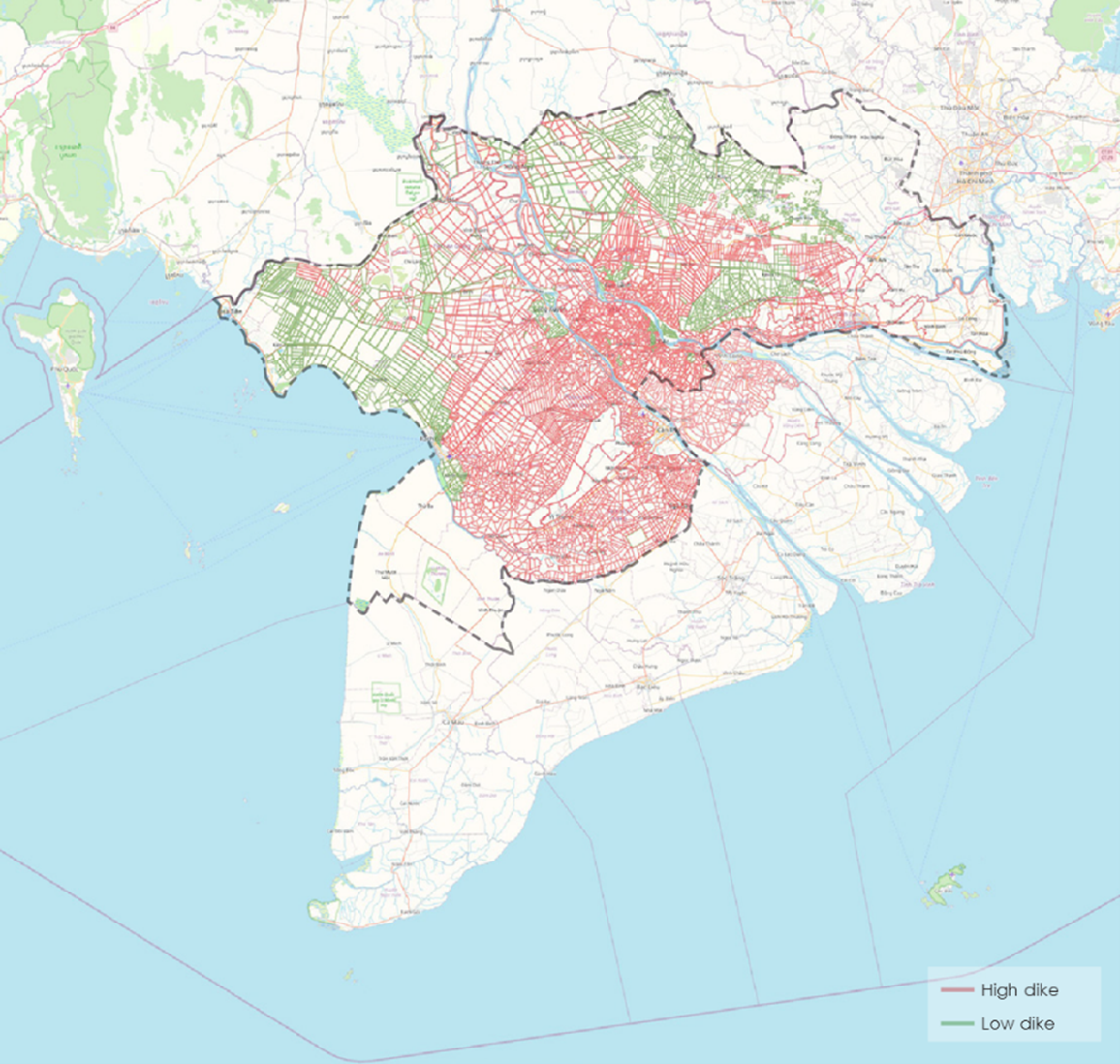Improving natural floodplain dynamics
When a floodplain does not experience flooding or if its natural cover is damaged, it loses its ability to provide ecological services. Floodplain restoration is a method used to regain the benefits for both rivers and communities. This involves reinstating the natural processes responsible for creating and sustaining the ecosystem, enabling a return to its natural state over time.
Suitable area
Internal Rate of Return
Background
Hydropower dams built upstream on regulated rivers, like the Mekong, significantly change water flows. This leads to less frequent and smaller flood pulses, causing a disconnect in the water system. This alteration has a negative impact on the supply of minerals and nutrients to floodplain soil, resulting in an unproductive habitat for plants and animals along the river. The local community, which depends on the Mekong River for their livelihood, is put at risk. To address this issue, various methods are available, with direct reconnection of floodplains being the most commonly used intervention.
Directly reconnecting floodplains involves physically restoring the connection between the river and its floodplains. There are multiple ways to do this, such as by removing or lowering embankments, or by lowering existing floodplains. However, in practice, these measures may not work in the project area in Vietnam because the area is heavily influenced by dykes and is already low-lying for flooding if there were no embankments. The extensive network of low and high dikes separates the previously natural floodplains from the river. Therefore, the most promising solution here is to reconnect some of these areas by using culverts under dikes to divert floodwater into surrounding areas (e.g., paddy fields), while utilizing the existing drainage channels and canals. The key to successful implementation will be to include the values of floods and sediments in the business plan, rather than considering them as problems to be mitigated.

Extensive network of dykes in Vietnam

Comparison of agricultural models in use today (modified from: RHDHV – ONE Architecture, 2021).